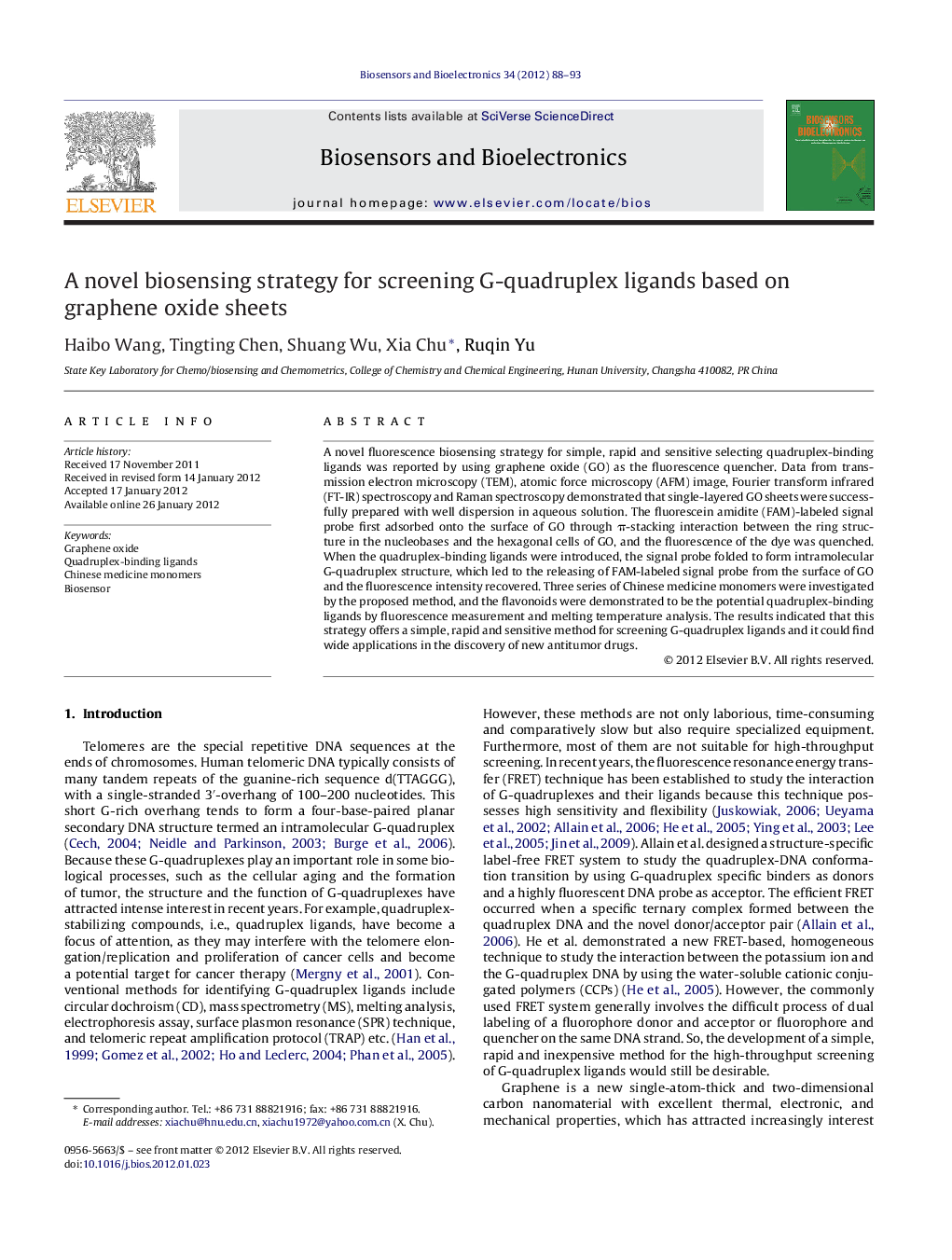| Article ID | Journal | Published Year | Pages | File Type |
|---|---|---|---|---|
| 867447 | Biosensors and Bioelectronics | 2012 | 6 Pages |
A novel fluorescence biosensing strategy for simple, rapid and sensitive selecting quadruplex-binding ligands was reported by using graphene oxide (GO) as the fluorescence quencher. Data from transmission electron microscopy (TEM), atomic force microscopy (AFM) image, Fourier transform infrared (FT-IR) spectroscopy and Raman spectroscopy demonstrated that single-layered GO sheets were successfully prepared with well dispersion in aqueous solution. The fluorescein amidite (FAM)-labeled signal probe first adsorbed onto the surface of GO through π-stacking interaction between the ring structure in the nucleobases and the hexagonal cells of GO, and the fluorescence of the dye was quenched. When the quadruplex-binding ligands were introduced, the signal probe folded to form intramolecular G-quadruplex structure, which led to the releasing of FAM-labeled signal probe from the surface of GO and the fluorescence intensity recovered. Three series of Chinese medicine monomers were investigated by the proposed method, and the flavonoids were demonstrated to be the potential quadruplex-binding ligands by fluorescence measurement and melting temperature analysis. The results indicated that this strategy offers a simple, rapid and sensitive method for screening G-quadruplex ligands and it could find wide applications in the discovery of new antitumor drugs.
► This work developed a novel graphene oxide (GO)-based biosensing platform for simple, rapid and high-throughput selecting of quadruplex-binding ligands. ► We chose graphene oxide as the fluorescence quencher. ► Three series of traditional Chinese medicine monomers are chosen to explore the natural quadruplex-binding ligands. ► A family of planar flavonoid compounds is found to be effective G-quadruplex ligands.
